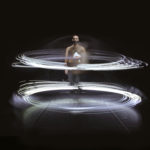Vancouver: Circus delights, Ballet BC and more - Vancouver Ballet Society
- Home
- City Reports 2020 - 2023
- Vancouver: Circus delights, Ballet BC and more

By Kaija Pepper
For two fun nights at the circus, spent in awe of the human body in virtuosic stunt mode, many thanks to PuSh International Performing Arts Festival, which ran January 19 to February 5.
The Cyr wheel provoked the creative explorations of Marica Marinoni and Juan Ignacio Tula of France’s Compagnie 7Bis. During their solos, on a double bill at Scotiabank Dance Centre’s black-box theatre, each kept their large aluminum ring in continual hypnotic motion.
In Lontano, Marinoni valiantly engages with her Cyr wheel in acrobatic leaps and swings, ducking in and out of its centre like a boxer in the ring. Throughout Instante, Tula exists entirely inside his wheel, spinning it round him like a huge hula hoop. He manages to undress and dress without stopping, creating vignettes in which he transforms into a whimsical little man battling the forces of his spinning world.
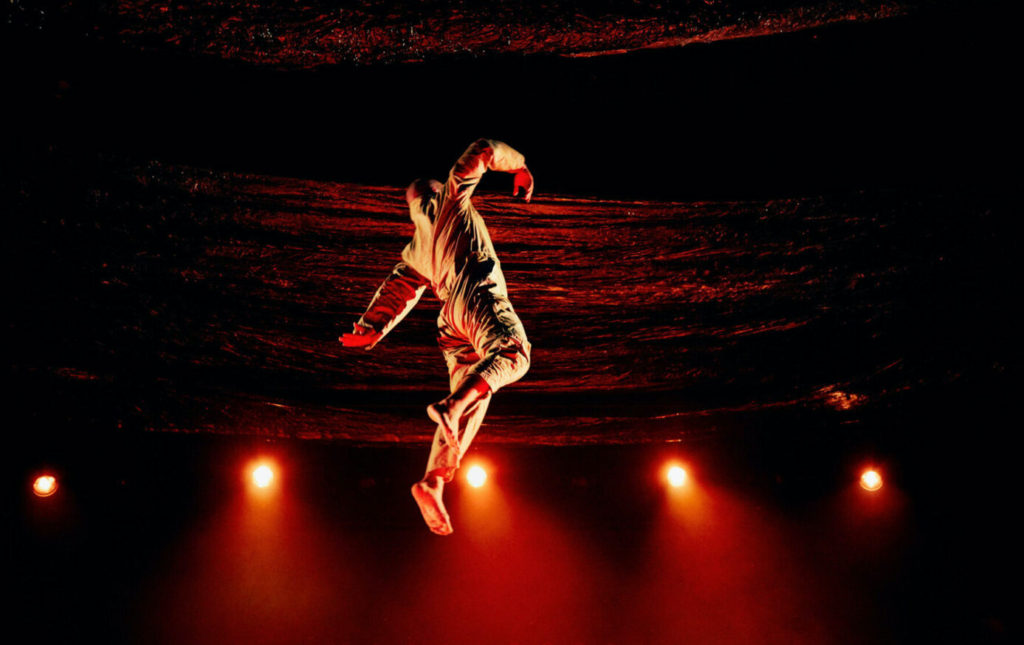
At the Playhouse theatre, Finland’s Race Horse Company presented O’DD, a mysterious space-age circus adventure. Over 55 minutes, Rauli Dahlberg navigates his acrobatic way through scenarios involving large balls, a trampoline, a high-speed revolving platform, and plastic wrap. With these props, he jumps, balances, flips, spins, and dives in choreography by Jarkko Mandolin that creates context for his physical daring. The other-worldly atmosphere is supported by a rich soundscape from Miro Mantere, who works with a set of steel pipes at the edge of the stage, their mysterious live reverberations adding texture to the recorded electronic score.
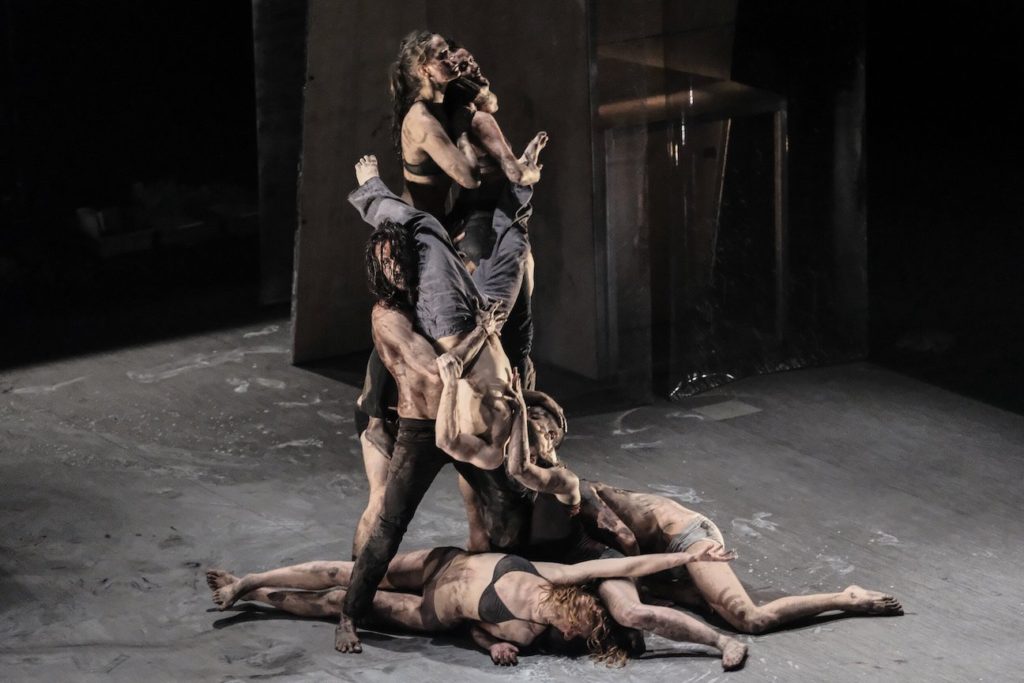
Also at the Playhouse as part of PuSh, Quebec City choreographer Alan Lake presented Le cri des méduses, inspired by Théodore Géricault’s 1819 oil painting, The Raft of the Medusa. The painting depicts the true story of shipwrecked passengers who resorted to cannibalism to stay alive, their extreme physical and mental suffering filling the canvas. Lake’s work has the same gloomy atmosphere, with visually stunning scenes of pain and exhaustion. The choreography was a little repetitious over 65 minutes, but at its most intense, the cast of nine nude and partly clad dancers seemed to become the splashes of paint that turned a real-life tragedy into a famous painting.

Matriarchs Uprising is a newer, smaller, festival in February, celebrating contemporary Indigenous dance created by women. Two events on the last day used some form of virtual reality to bring their creative worlds to life. For TOMO VR, by Atamira Dance Company from Aotearoa (the Māori name for New Zealand), we sat in one of Scotiabank Dance Centre’s studios with VR headsets, through which each audience member was separately immersed in a dreamy and intimate digital space that choreographer Gabrielle Thomas described beforehand as the womb. The event was a lovely introduction to Atamira, including some of its Māori philosophies and language, which Thomas shared with us in circle discussions before and after the 14-minute film, a VR reworking of their 2019 stage work, Tomo (Māori for enter).

Maamawi (ᒫᒪᐏ): Together Through the Fire, choreographed by festival producer Olivia C. Davies and centred around the Anishinaabe Seven Fire Prophecies, was a more formal AR (augmented reality) performance in the Dance Centre’s black-box theatre. The 45-minute piece starred digital artwork, projected on a large upstage screen, by Athomas Goldberg. This artwork was based on designs by Ojibwe illustrator Joshua Mangeshig Pawis-Steckley, who describes his work as having a “modern woodland art style.” (You can see it on Instagram at @mangeshig.)
Onstage dancers Daisy Thompson and Sophie Dow were linked via digital technology to projected drawings of the Wolf and Eagle, the dancers’ movements guiding the animals’ moves. Maamawi reminded me of a graphic novel, with Davies providing live and recorded snippets of storytelling that gave context to the bold digital imagery for this co-production by Davies’ company O.Dela Arts and Pepper’s Ghost New Media Collective.

With the Vancouver International Dance Festival yet to finish off as I write (Save the Last Dance for Me was previewed here), the city has been busy. And not all because of festivals. For two nights in January, MOVETHECOMPANY presented artistic director Joshua Beamish’s Source Amnesia. The title refers to the inability to remember where, when, or how certain knowledge has been acquired, providing a timely hook in this era of fake news. The work itself plays with memory in more general terms, most obviously when one of the quintet of dancers (Calder White) repeats a story three times over the course of the 70 minutes, interrogated by others as to the accuracy of his telling. In the choreography, uncertain memory is reflected in Renée Segouin’s opening and closing solos, with their vague and uncertain steps and gestures. The energy of the piece comes from the straightforward contemporary ensemble sequences, set to dance tracks by British Rival Consoles — these were sharply executed and well-remembered.
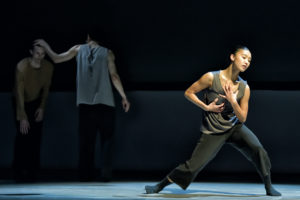
Finally, mid-March, Ballet BC premiered two darkly atmospheric pieces at the Queen Elizabeth Theatre as part of a triple bill. A remount of Adi Salant’s quirk-filled workout from 2019, WHICH/ONE, opened.
The first premiere was by Czech Jiří Pokorný, known in Vancouver as a former dancer with Kidd Pivot. A Night Walker, for seven dancers, featured lighting design by Alan Brodie that cut through the gloom in the form of an arc of spots hanging low across the stage and in lights strapped onto the dancers’ foreheads, like miners wear to navigate subterranean depths. Within that gloomy staging, the ensemble, clad in black, form fleeting moments of tension and drama. When Vivian Ruiz — an animal figure in white, with antlers on her head — stands in front of the backdrop, her antlered shadow looms high, primal and frightening.
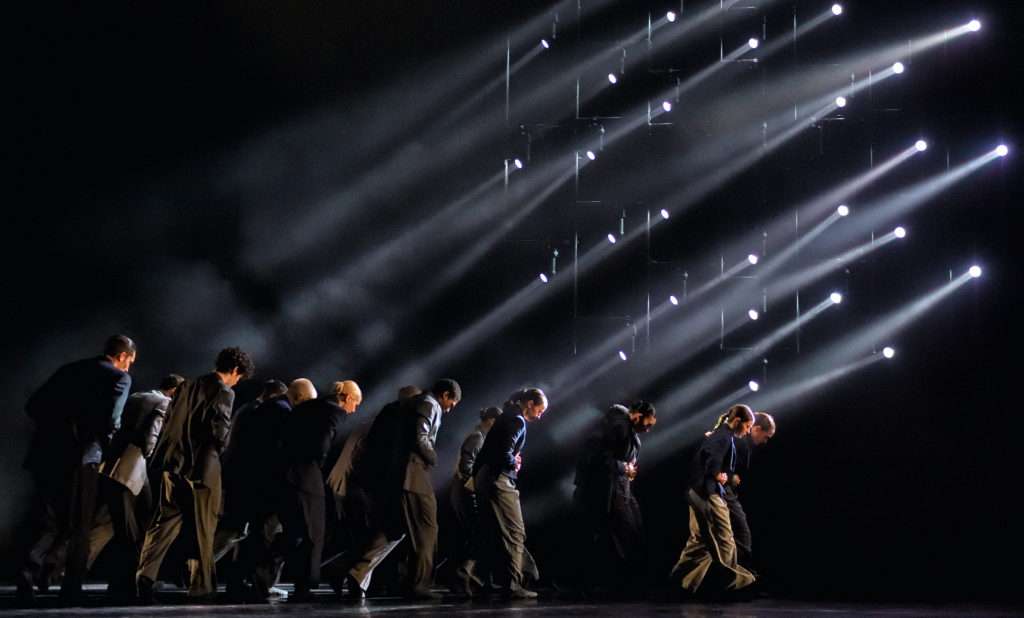
Shay Kuebler, a local choreographer with his own company, Radical System Art, premiered his first work for Ballet BC, First/Last. Despite an enveloping gloom very similar to the previous piece (dark costumes, dark stage), the unique rhythm and pulse of the dancing soon established itself. A big difference was that Kuebler used the full company of 20 dancers (including five in Ballet BC’s “emerging artist” category), who run in tight formation around the stage, heads down, each step tiny and tight, like introspective monks hurrying to prayer. Out of the group, Livona Ellis (one of the few longstanding company members) breaks free for a character solo full of foolish posturing and jazzy pizzazz. The group, by then, has begun attacking space with the kind of big, muscular movement these young contemporary dancers — credited as co-choreographers — clearly relish.
